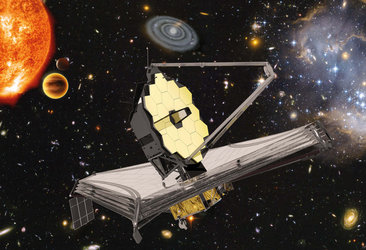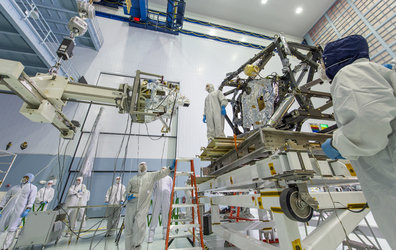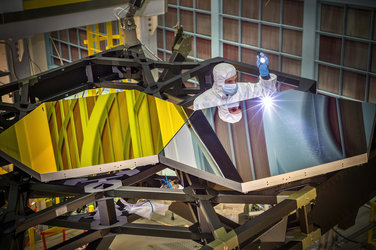NIRSpec factsheet
Overview of the NIRSpec instrument, one of Europe's contributions to the James Webb Space Telescope.
Name
NIRSpec stands for Near-InfraRed Spectrograph
Status
NIRSpec was delivered to NASA in September 2013. Since then it has been integrated into the James Webb Space Telescope (Webb) payload module called the Integrated Science Instrument Module (ISIM).
Partnership
NIRSpec is part of ESA’s contribution to the Webb mission. NIRSpec is built for ESA by a consortium of European companies led by Airbus Defence and Space (ADS). NASA’s Goddard Space Flight Centre provided two of its sub-systems (detectors and micro-shutters).
Description
NIRSpec is one of four science instruments on Webb. It will support the mission's four main science themes by providing low, medium and high-resolution spectroscopic observations in the near-infrared (from 0.6 to 5.0 microns). In its primary mode, it is a multi-object spectrograph capable of observing more than 100 objects simultaneously over a 9 square-arcminute field of view. In its integral field spectroscopy mode, it allows astronomers to study the detailed structure of extended objects while its slit spectroscopy mode is be used, among other things, to study the properties of extrasolar planets.
Size and weight
NIRSpec has a size of approximately 1.9 m x 1.3 m x 0.7 m and weighs less than 220 kg.


Access the video
NIRSpec facts
NIRSpec is the first multi-object spectrograph in space, thanks to a state-of-the-art instrument design and the use of almost a quarter of a million micro-shutters arranged in four arrays (provided by NASA’s Goddard Space Flight Center).
NIRSpec is equipped with an integral field unit optimized for the spectroscopic study of complex extended objects. It provides 900 spectra per exposure over a field of view of 3 x 3 arcminutes.
The structural parts of NIRSpec and almost all of its mirrors are made of Silicon Carbide (SiC), a novel ceramic material, with very high stiffness-to-mass ratio and thermal stability.
NIRSpec allows scientists to study objects embedded in shrouds of gas and dust, to find out more about how galaxies formed and evolved, and to characterise the atmospheres of extrasolar planets to determine if water is present.









